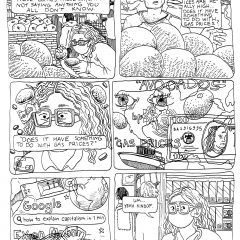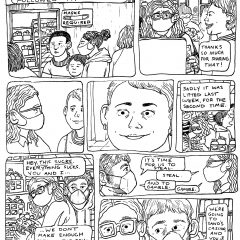In the parlance of the media theorist Marshall McLuhan, buildings are extensions of our bodies. That is, they act as a secondary, artificial membrane, protecting those within from the harsh conditions without. In the most primary sense, buildings shield our bodies from the natural elements. They keep out the wind and the rain. They shelter us from storms. As private dwellings, they offer reprieve from hectic public spaces. On a deeper level, our most beloved buildings provide us with sanctuary. Your body is a temple.
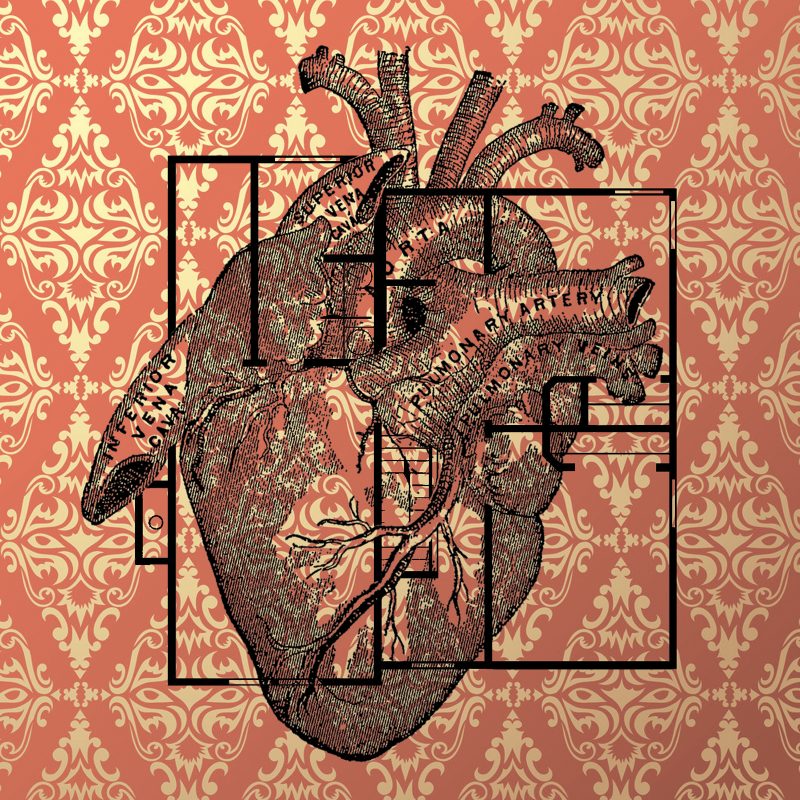
The language we use to describe architecture borrows from that of anatomy: floors are measured in square feet; the frame of a building relates to the frame of the body; and the word façade even has face as its root. As the cliché goes, “the eyes are the windows to the soul.” Walls, like skin and flesh are to organs, demarcate the spaces of buildings into separate rooms or chambers. (The four-chambered heart!) The most familiar spaces make us feel at peace. Home is where the heart is.
Many animals – ants, birds, and beavers, for example – build homes for themselves. But humans take home construction to a different level: foundations and roofs; doors and windows; walls, stairways and halls; multiple levels of specialized rooms; not to mention the many modern comforts of air-conditioning, central heating, electric lights, plumbing, running water, security systems, and WiFi, all combine to create a complex dwelling of creature comforts that is all too often taken for granted.
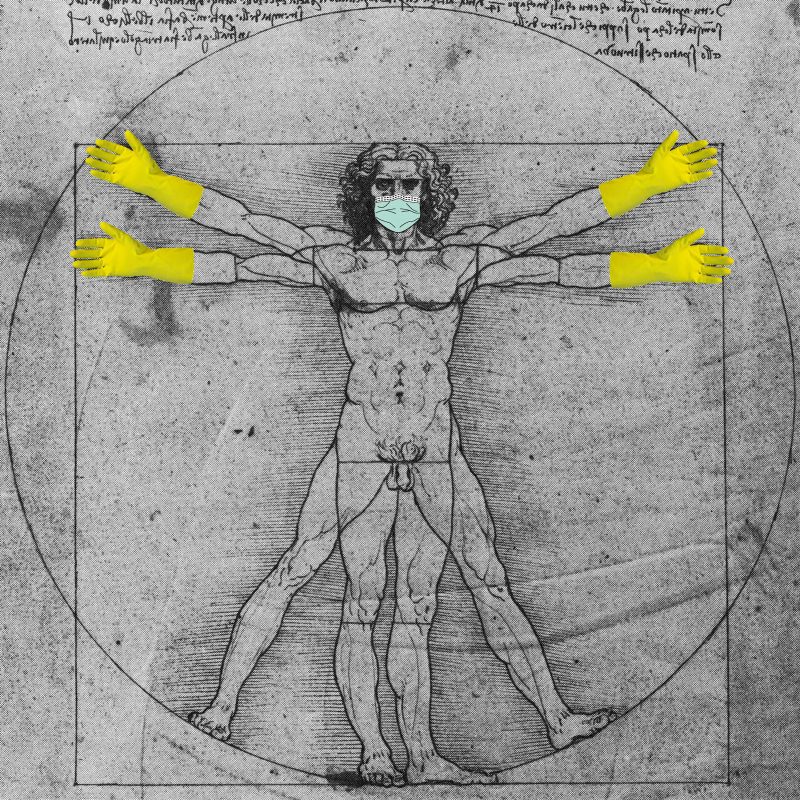
The connection between architecture and anatomy is found throughout history. The Roman architect Vitruvius outlined the relationship between the body and the building in his Ten Books on Architecture written between 30 and 15 BC. Fifteen centuries later, during the Italian Renaissance, Leonardo da Vinci celebrated the work of the ancient architect in his drawing of the Vitruvian Man (c. 1490). The text that appears above and below this idealized image of man begins
Vetruvio, architect, puts in his work on architecture that the measurements of man are in nature distributed in this manner: that is a palm is four fingers, a foot is four palms, a cubit is six palms, four cubits make a man, a pace is four cubits, a man is 24 palms and these measurements are in his buildings.
During Coronavirus, Leonardo’s Vitruvian Man seems both perverse and prescient. With his outstretched limbs and thousand-yard stare, he definitely looks like someone you wouldn’t want to approach. And of course, he’s totally naked! While social distancing, how many cubits should we keep from such a man?
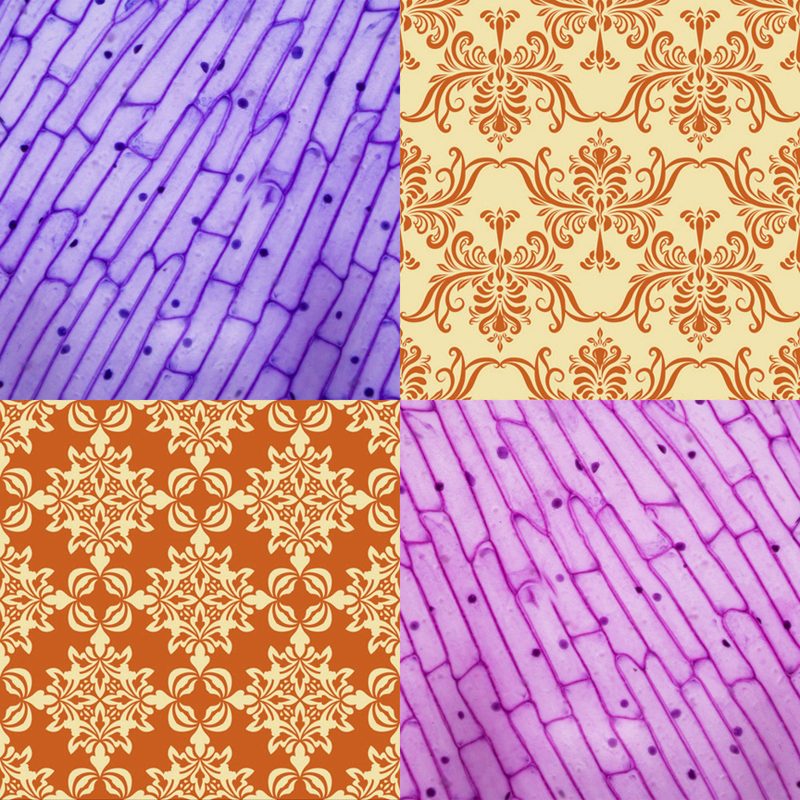
Many modern writers indulged in the darker, more mysterious kinship between bodies and buildings in their work. At the beginning of “The House of Usher,” for example, Edgar Allan Poe describes the dilapidated mansion of the friend the narrator is visiting as like a face with “vacant, eye-like windows.” In her essay, “Better for Haunts: Victorian Houses and the Modern Imagination,” Sarah Burns writes how “the house itself reflects Usher’s disintegrating body and disordered mind.” Similarly, in “The Yellow Wallpaper,” Charlotte Perkins Gilman has her unnamed protagonist mentally merge with the woman she believes to live within the wallpaper of the room where she is staying. Both of these American Gothic tales involve characters whose mental faculties directly relate to the buildings in which they are confined.
In The Poetics of Space, French philosopher Gaston Bachelard describes the house as a potent metaphor for the mind and body. For example, he writes that the cellar “is first and foremost the dark entity of the house, the one that partakes of subterranean forces. When we dream, we are in harmony with the irrationality of the depths.” It is no surprise our dreams are full of constantly shifting, irrational spaces culled from memories of the various spaces we’ve inhabited. The spaces we’ve inhabited inhabit us. Those earliest of childhood experiences in our family homes shape our memories and dreams for years to come.
On a certain level, it makes perfect sense that we should shape our architecture around our anatomy. Indeed, how else should we do it? As extensions of our bodies, buildings are inherently bound to them and vice versa. Bodies and buildings share a bond. They both age in time, some more gracefully than others. We grow up inside our family homes and eventually we outgrow them. (Most of us anyway.) But we continue to live in new homes throughout our lives. What we create helps create us. As Winston Churchill observed following the destruction of the Commons Chamber during the Blitz in 1943: We shape our buildings and afterwards our buildings shape us.
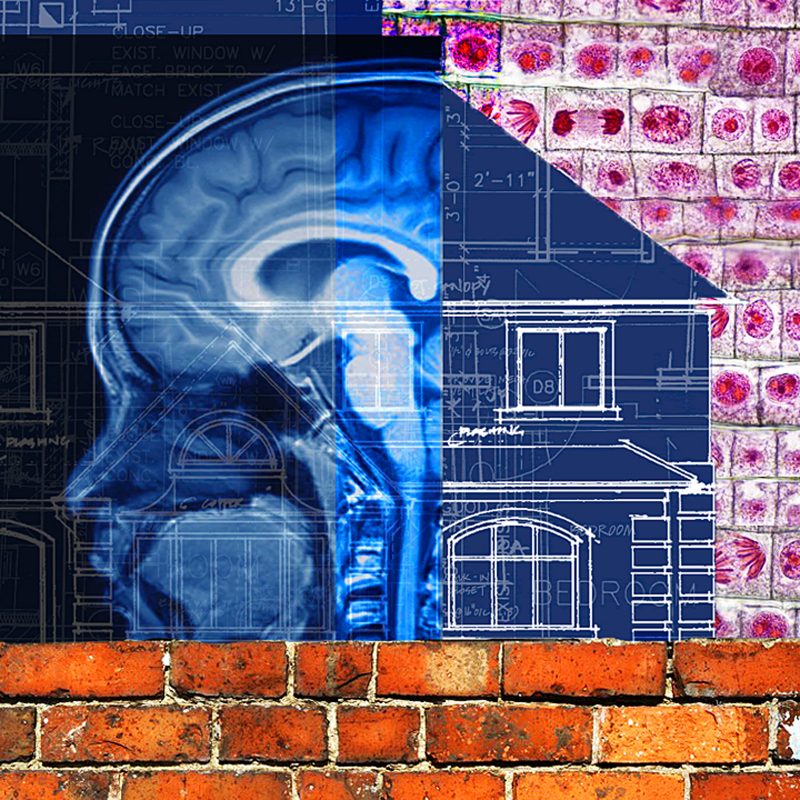
Returning to language, it is important here to consider the verb to dwell. To dwell means “to live or reside (in)” or “to linger (on) a particular thought, idea, etc. to remain fixated (on).” To dwell, from the Middle English dwellen (“delay; linger; remain”), also means: “to abide; to remain; to continue.” Abide (to endure without yielding; to withstand; await defiantly; to persevere) itself relates to abode. And of course, an abode is a place of residence, a house or home. Even when inactive, home is a noun and a verb. It is not simply a place, but rather a special place set apart from the world, a sacred space where we feel peace, where we feel safe, and where we feel loved.
During the current crisis, due to the stay-at-home order across the nation, many of us are forced to reconsider the relationship between our dwellings and ourselves. Many of us are at home, in our apartments and houses, waiting out the virus for an indeterminate time. We are anxious. We are frightened, our future uncertain. We find ourselves strangers in a familiar land. And of course we are going stir crazy. And “cabin fever” creeps in. But perhaps we could take a moment now and then, between washing our hands, binge watching, and pacing the floor, to reconsider our relationship with the spaces where we live, to revisit home. What better time to reflect on the places where we dwell?
For More Information
Official website of Marshall McLuhan:
https://www.marshallmcluhan.com/
Ten Books on Architecture by Vitruvius at Project Gutenberg:
http://www.gutenberg.org/ebooks/20239
The University of Chicago Press Journals: https://www.journals.uchicago.edu/doi/abs/10.1086/669220?mobileUi=0&journalCode=amart
In Harvard Design Magazine:
http://www.harvarddesignmagazine.org/issues/6/the-poetics-of-space-by-gaston-bachelard
From the Parliament of the United Kingdom website:
https://www.parliament.uk/about/livingheritage/building/palace/architecture/palacestructure/churchill/
From Wiktionary:
https://en.wiktionary.org/wiki/dwell



